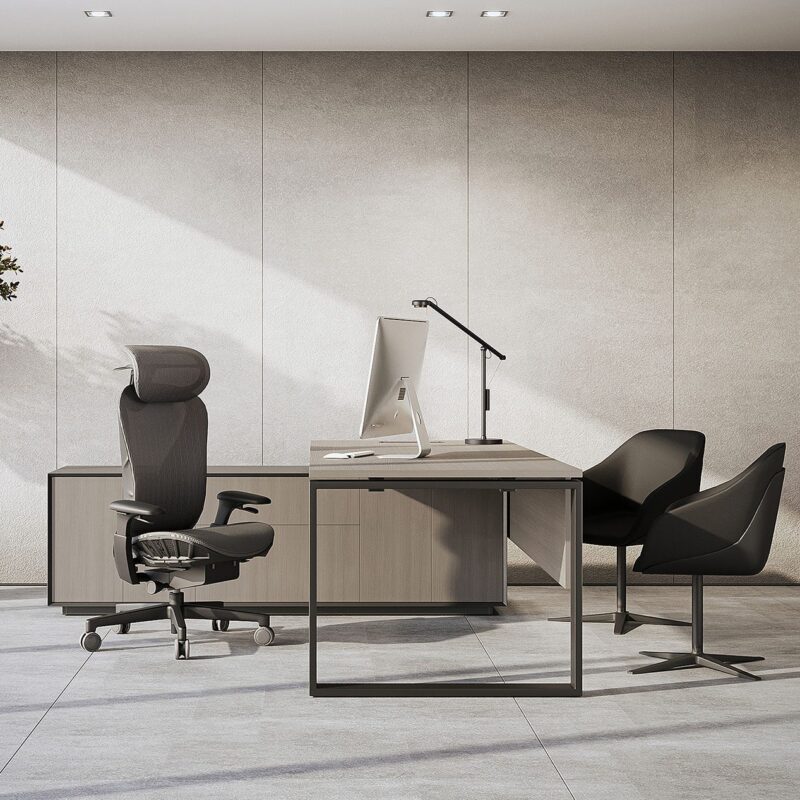Blog
The Significance of Color in Contemporary Office Furniture Design

Significance of Color in Contemporary Office Furniture | Urban 411
What Color Really Means at Work
Color is more than just pretty, it has meaning. It has an effect on how we feel, think, and act. Think about this: red can mean urgency or intensity, green can mean peace and renewal, and blue? It helps you focus and think clearly. Then there are the bright sparks, which can boost energy and creativity when used properly.
So, while choosing the color of your contemporary office furniture, you should think about more than just how it looks. It’s all about the atmosphere, the work, and how well your team works together in that region. A well-thought-out color scheme can boost morale, productivity, and happiness at work.
Color Schemes For Modern Offices
Modern businesses are moving away from dull colors and toward brighter ones. Taupe, white, and gray remain popular colors, but more and more businesses are aiming for bold colors. They are thinking about adding colorful touches, like a bright blue chair or a vivacious green desk divider in the breakout space.
In the UAE, it’s usual to see colorful accents against earthy tones. Browns and whites make the space feel stable, but the bright greens, blues, and oranges give it a little bit of life and a touch of local style. It’s a trend toward places that show off cultural qualities as well as brand recognition.

Choosing The Right Colors For Office Furniture
You need to think carefully about the colors you use in your business. Looks are crucial, but they have to work with how well something works. It’s not just about keeping up with the latest Pinterest trends. The most important thing is to do what helps your team focus, be creative, and feel at ease.
A good rule of thumb is to put bold things that show how alive your business is on a neutral background, such as a smooth white desk or a soft gray office. The marketing team might do well in bright, lively spaces, whereas the finance or legal teams would do better in more muted, earthy colors that help them focus.
Finding the right balance is the most important thing. The colors you choose should match the ideals you want to instill and the jobs you need to do.
Using Real Cases To Learn How To Apply Things
A lot of tech companies actually care about color. The goal of adopting bright colors like red, green, and yellow is to encourage creativity and working together. Legal firms and consulting firms, on the other hand, generally choose muted colors like greys, navy blues, and darker woods to make the space feel calm and focused.
If you can’t think of anything, see what other individuals in your field are doing. Look at the color schemes of successful organizations to learn how you might use them to improve the look of your office and the image of your firm.
Also Read 5 Office Design Tips to Maximize Productivity and Wellness
Letting People Choose How They Want To Live
There is a strong (and sometimes ignored) way to use color at work. Let your employees speak their minds. Small things that show off your personality, like a brilliantly colored chair, a personalized desk light, or a vibrant wall, can have a tremendous effect. People feel more connected to their jobs, and a sense of pride and ownership is encouraged.
Conclusion
Color isn’t just a matter of taste, it’s a strong tool. It affects how you feel, gives you new ideas, helps you focus, and impacts the culture of your company. With the right colors and furniture that is both comfortable and useful, your office may go from “nice looking” to “empowering.”
As workplace design changes, one thing is certain: color will always play a big role in how spaces are planned, seen, and used. So, as you plan your next workplace renovation, don’t only think about the furniture. Think about the colors that will make your seats and workstations stand out as well.
FAQs
Color isn’t only a matter of style; it also has an effect on mood, focus, and teamwork. In UAE offices, cooler colors like blue help people focus, while yellow or green accents can give teams energy and increase morale.
For a clean look, modern offices in Dubai and Abu Dhabi tend to use neutral colors like beige, gray, and white. They often use bright colors like teal, terracotta, or forest green to show off their brand and creativity.
Using color strategically can help you focus, lower your stress levels, and spark new ideas. For instance, blue can help you focus, and orange or yellow can boost your vitality in places where people work together.
Yes, of course. Urban 411 has a lot of different office furniture alternatives that may be customized to fit the demands of different departments, colors that match the company’s brand, and the culture of the company.










